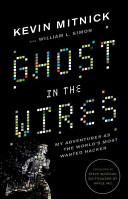

Mitnick emphasizes the critical role that technology plays in hacking, outlining how advancements in computing and telecommunications have opened new avenues for exploitation. He discusses various technologies he encountered, from early mainframes to the rise of the internet, and how each advancement presented new challenges and opportunities for hackers. This idea highlights the relationship between technology and security, illustrating that as technology evolves, so too must the strategies for protecting against misuse. Mitnick's insights serve as a reminder for technologists and security professionals to stay ahead of potential threats by understanding the tools hackers use.
Continue readingIn 'Ghost in the Wires', Kevin Mitnick delves into the world of social engineering, a technique used to manipulate individuals into divulging confidential information. Mitnick illustrates how he mastered this art by employing psychological tactics, understanding human behavior, and exploiting weaknesses in trust. He shares anecdotes of how he successfully impersonated authority figures, convinced employees to reveal passwords, and gained access to secure systems without ever having to hack into them directly. This idea emphasizes that the most formidable barriers in cybersecurity are not just technological but human. Mitnick's exploits reveal the importance of awareness and training in organizations to prevent social engineering attacks, highlighting that knowledge of human psychology is crucial for both attackers and defenders in the digital landscape.
Continue readingMitnick's narrative charts the evolution of hacking from the early days of phone phreaking to the sophisticated cyber-attacks of today. He describes how he began as a curious teenager, exploring the telephone system and learning how to manipulate it for free calls. As technology advanced, so did his methods, transitioning from simple tricks to complex hacking techniques that exploited vulnerabilities in software and networks. This evolution is not just about the tools and techniques but also reflects a shift in the hacker culture, from playful exploration to malicious intent. Mitnick's perspective provides valuable context for understanding current hacking trends and the ongoing battle between hackers and cybersecurity professionals.
Continue readingMitnick's story serves as a cautionary tale about the consequences of hacking, both for the hacker and the victims. He faced severe legal repercussions for his actions, including imprisonment and a permanent mark on his record. The book discusses the impact of his hacks on individuals and corporations, revealing the financial losses and security breaches that ensued. This idea underscores the ethical considerations in the hacking community and the fine line between curiosity and criminality. Mitnick's experiences prompt readers to reflect on the broader implications of hacking in society, including the need for responsible behavior in the digital age.
Continue readingThe psychological aspect of hacking is a recurring theme in Mitnick's narrative. He explores the motivations behind hacking, which can range from curiosity and thrill-seeking to revenge and financial gain. Mitnick reflects on his own motivations, providing a personal account of how his desire for knowledge and mastery over systems drove him to hack. This idea invites readers to consider the psychological profiles of hackers and the societal factors that contribute to their behavior. Understanding these motivations is crucial for developing effective prevention strategies and fostering a culture of cybersecurity awareness.
Continue readingMitnick advocates for the importance of ethical hacking as a means to improve security. He argues that understanding the mindset of a hacker is essential for creating robust defenses against cyber threats. By employing ethical hackers, organizations can proactively identify and mitigate vulnerabilities before they are exploited by malicious actors. This idea promotes a collaborative approach to cybersecurity, where ethical hackers work alongside IT professionals to strengthen systems. Mitnick's call for ethical hacking underscores the need for a shift in perception, viewing hackers not merely as criminals but as potential allies in the fight against cybercrime.
Continue readingThe book concludes with reflections on the future of cybersecurity and the ongoing challenges that lie ahead. Mitnick discusses the implications of emerging technologies, such as artificial intelligence and the Internet of Things, on security practices. He warns that as technology continues to evolve, so too will the tactics employed by hackers, necessitating a continuous adaptation of security measures. This idea encourages readers to stay informed about technological trends and to prioritize cybersecurity as an integral part of technological development. Mitnick's insights serve as a call to action for individuals and organizations to remain vigilant and proactive in safeguarding their digital assets.
Continue reading